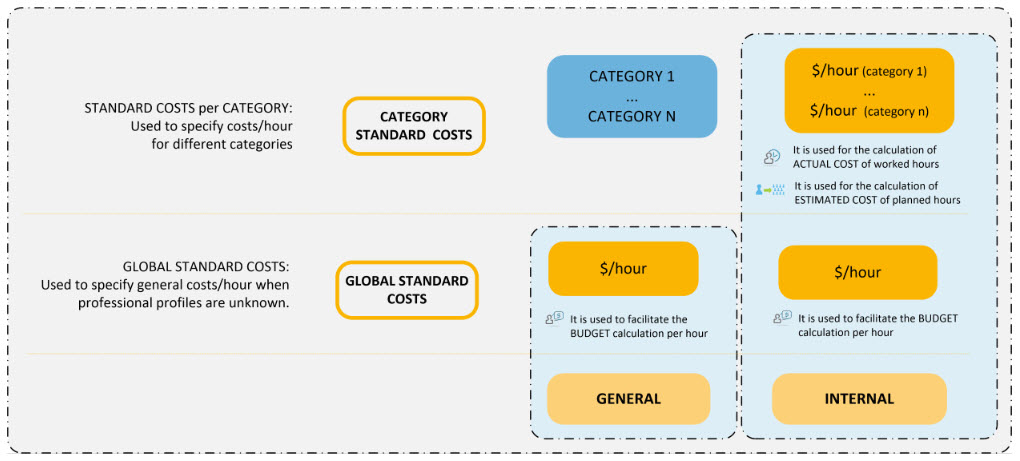 Tracking expenditure and revenue flows answers one of the burning questions of every board: “How much are we actually investing in our projects?”. This question often crops up when we are talking about internal, IT or transformative projects. The planning and follow-up model should be agreed with the finance directorate and business units, so that project managers understand the parameters for action, how they should monitor budgets and use of resources.
Tracking expenditure and revenue flows answers one of the burning questions of every board: “How much are we actually investing in our projects?”. This question often crops up when we are talking about internal, IT or transformative projects. The planning and follow-up model should be agreed with the finance directorate and business units, so that project managers understand the parameters for action, how they should monitor budgets and use of resources.
The PMO should issue clear instructions on:
- Which cost elements to monitor, especially in terms of hours and purchasing.
- How to incorporate external suppliers: hours or deliverables.
- Which metrics to use: hours, cost, profit, earned value, progress etc.
- How frequently to measure each parameter.
- Standardized periods for reporting working hours.
- Measuring income and profit margins.
In the following sections we analyze these topics in greater depth, highlighting their integration into ITM Platform whenever possible.
Cost of working hours
If you require oversight of the estimated hours, actual hours worked and their cost, the module of standard costs and provider rates must be defined. Carrying out the definition in collaboration with the finance and HR departments will ensure that the project’s financial management is line with the organization’s policies and procedures. ITM Platform offers a module to establish the standard cost from an abstract level down to the most detailed one:
-
-
- General: hourly cost of any task. Useful in the conceptual phase of the project.
- Internal and external: whether you use your own people or outside contractors this allows you to define the hourly cost in a generic fashion.
- Cost per professional profile: allows you to define the standard cost of the internal personnel for each profile, within different timeframe.
- Provider rates: similarly, provider rates can be fed into the system, allowing you to compare costs per person and per provider.
-
Purchases and acquisitions
Purchasing is one of the key activities in any company. When managed properly it enables easier planning and follow up of cash flow. Normally, purchase management is incorporated in the early stages of maturity, typically before monitoring working hours. Nonetheless, it is important that projects synchronize their purchasing with the organization’s financial management, so that both are in agreement. The purchase flow is a kind of workflow and it must be linked to a procedure previously agreed with the financial and purchasing directorates, ensuring that each project’s purchasing is in line with purchasing practices in general.In addition, budget accounts grouping purchases must be used homogeneously.
Revenue
Similarly to purchasing, the classification and time management of the project revenues should be synchronized with the organization´s regular financial procedures. The system will then be able to create reliable margins and client profitablity.


 Man-hours, also called person-hours, are the unit of measure that is used in project management to measure the efforts needed to complete a task.
Man-hours, also called person-hours, are the unit of measure that is used in project management to measure the efforts needed to complete a task.
